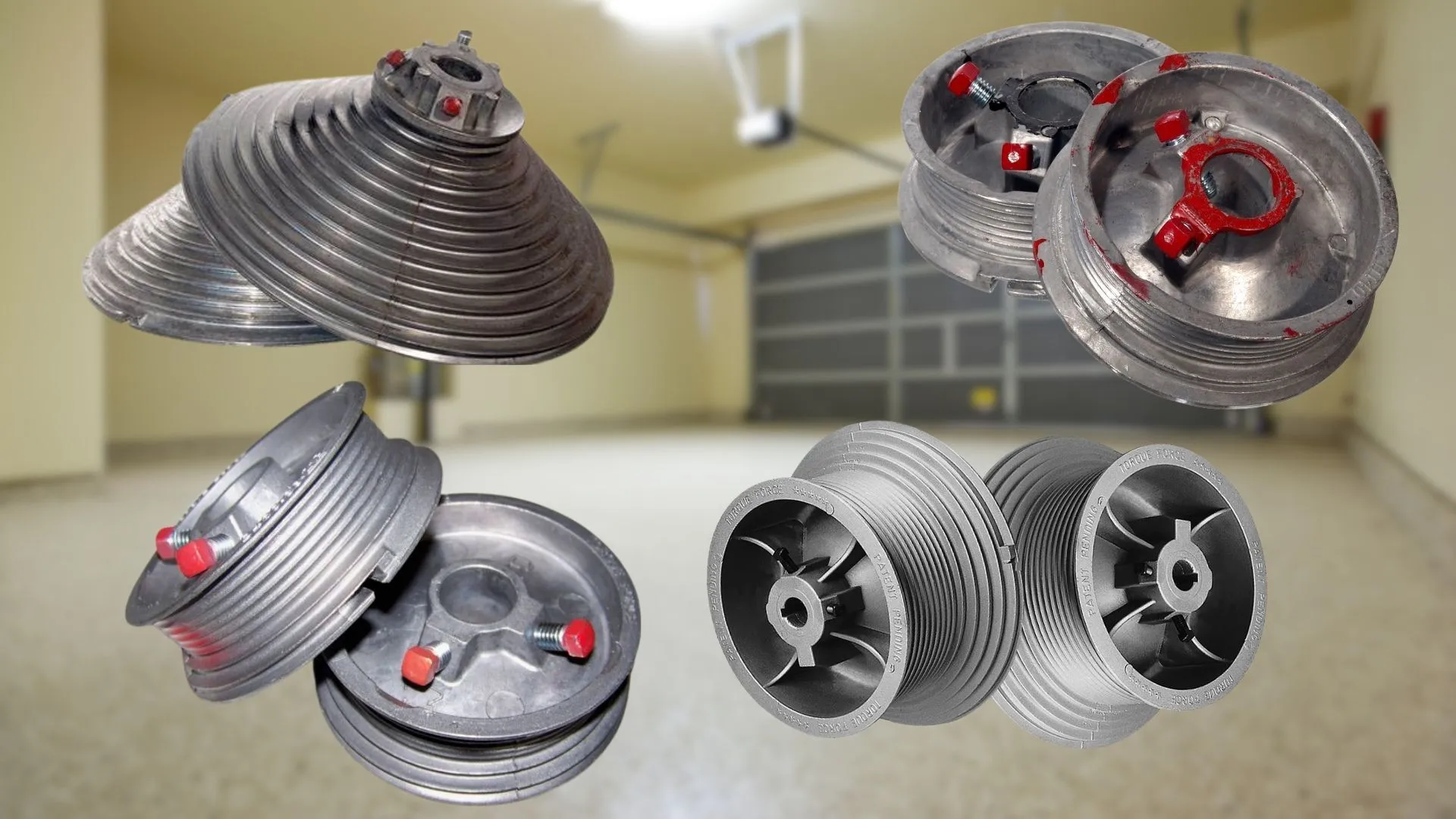
Garage Doors and Parts – How garage door drums work is essential for understanding the smooth operation of your garage door system. Garage doors rely on multiple components to function correctly, and the drums play a crucial role. They are located at the top of the door and are responsible for guiding the cables that help lift and lower the door. Without properly functioning drums, your garage door would be difficult to operate, and it might not move at all. This article explains the importance of garage door drums and how they interact with other components like the springs and cables.
Garage door drums are cylindrical components that sit at each end of the torsion spring shaft. They serve as anchors for the cables that run along the sides of the garage door. When the door opens or closes, the cables wind and unwind around the drums. This action helps the door move smoothly along its tracks. Drums are crucial in ensuring that the cables are evenly distributed and that the door stays balanced during operation.
Garage door drums are designed to bear a significant amount of weight. They must withstand the forces exerted by the springs and cables. Typically made from durable materials like steel or aluminum, these parts are built to last and function under heavy stress. Over time, however, they can wear out, which may cause the door to malfunction or operate unevenly.
Springs play a critical role in assisting the garage door in opening and closing. The most common types of springs used in garage doors are torsion springs and extension springs. Torsion springs are typically installed above the door, while extension springs are placed along the tracks.
When the door is closed, the springs are wound tightly, storing potential energy. As the door is activated, the springs release this energy, which helps lift the door. The tension in the springs works in conjunction with the drums to lift the door smoothly. Without the springs, the door would be far too heavy to lift manually.
The interaction between the garage door drums, cables, and springs is what makes the door move. When the door opener is activated, the motor begins to rotate the torsion spring shaft. This rotation causes the drums to turn. As the drums turn, the cables that are attached to them begin to wind or unwind. The tension created by the winding cables helps lift the door.
The drums work in unison with the springs to maintain an even distribution of tension on both sides of the door. If the tension is uneven, the door may become misaligned or move unevenly, causing operational problems. The springs’ ability to balance the weight of the door is essential, and the drums help keep the cables properly aligned to maintain that balance.
Garage door drums are essential for ensuring that the door remains balanced. A balanced door is crucial for smooth and safe operation. If one drum or cable is damaged or worn, the door can become unbalanced. This can lead to jerky movements, increased wear on the components, and even the potential for the door to fall unexpectedly.
By maintaining an even distribution of tension on both sides of the door, the drums help ensure that the door opens and closes with minimal strain. This also prevents the cables from fraying or breaking prematurely. Balanced doors are safer, quieter, and less likely to experience mechanical failures.
Over time, garage door drums can become worn or damaged, which can affect the performance of the door. Common issues include:
Regular maintenance, such as lubricating the drums and checking the cables for wear, can help prevent these issues. If you notice any problems with your garage door’s operation, it’s essential to address them promptly to avoid further damage.
Garage door drums are vital components that help maintain the smooth movement of the door. By working together with the springs and cables, the drums ensure that the door is balanced and functions properly. Understanding how these parts work together can help you identify problems early and keep your garage door in optimal condition. Regular inspection and maintenance of the drums, cables, and springs are necessary for long-term reliability and safety.
This website uses cookies.